Did you know, that around 500 000 US homes still do not have adequate plumbing? This shocking statistic has sent shockwaves through an industry much maligned for being too expensive for ordinary people and has led to a jump in students and apprentices registering for the trade – not a bad thing at all. The Read more
residential
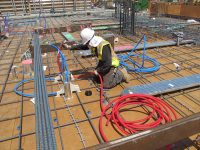
Did you know, that around 500 000 US homes still do not have adequate plumbing? This shocking statistic has sent shockwaves through an industry much maligned for being too expensive for ordinary people and has led to a jump in students and apprentices registering for the trade – not a bad thing at all. The more players there are in the field, the more competition will raise standards and force prices down, and hopefully, that will mean that more folks can get the work done that they really need.
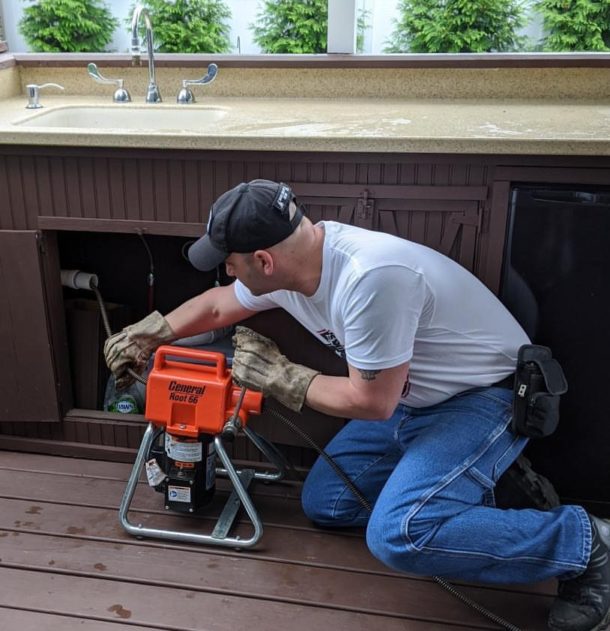
So we thought we’d help you jump the gun (at least, a tiny bit), and help you discover what are the essential tools and skills that every aspiring plumber must-have.
First up, what tools should every plumber have – and know how to use?
Well, as your progress through your training and apprenticeship, you’re going to learn all about what you’ll need when, and depending on the discipline you’re pursuing, home-based or commercial, you’ll learn about different requirements and needs. But, as a general rule, you’ll not be worth any salt at all without:
- Pipe wrench
- Basin wrench
- Adjustable wrench
- Faucet key
- Hacksaw
- Tube and plastic pipe cutters
- Plumber’s torch
- Thread sealing tape
- Pliers
- Press fitting systems
- Plungers
- Hand Auger
- Snake Machine
- PPE
- Heat shields/pads
- PEX pipe expander & fittings
- Crimpers
- Stubby screwdriver
- Borescope
- Plumbing business software
- Communication skills
- Patience!
And when you’re really ready to up your game, you’ll be wanting a lathe too.
What skills will you be learning?
Plumbing is so much more than just working with waterpipes and you’ll want to make sure that you’re best placed to capitalize on opportunities when entering the market. So when choosing your school or training facility, you want to make sure that you’ll be learning:
INSTALLATION, TROUBLESHOOTING, AND REPAIR
- installing and repairing piping (for waste, drainage, and venting systems)
- installing and repairing plumbing fixtures (sinks, faucets, toilets, etc.)
- fixing leaking or clogged lines
- connecting appliances that use water (washing machine, dishwasher, etc,)
- installing piping for gas, pneumatic, and air handling systems
THE LATEST TRENDS AND TECHNOLOGY
- hands-free faucets and toilets that use motion technology to turn off and on
- programmable showers that can be set up with personalized lighting, temperature, and sound
- digital leak-monitoring systems that detect leaks fast, and send alerts straight to the client’s cell phone
- greywater recycling systems that take “gently” used water from showers, washing machines, and dishwashers, and recycle it for re-use in the home and garden
BLUEPRINTS & BASIC MATH
Interpreting blueprints correctly is a very savvy skill for all plumbers to learn. Without this, you won’t be able to understand mechanical or architectural drawings which help you correctly install fixtures and appliances. Learning how to do this correctly will also help you sharpen your analytical skills too.
Now, to learn all of this you’ll be wanting to make sure that you find the best possible training facility in order to get the best possible apprenticeship.
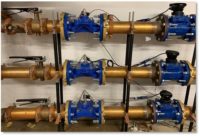
As a leading global construction company, Tidhar’s success relies on the company’s reputation for quality and customer satisfaction. The dynamic international real estate group employs a unique combination of entrepreneurial, planning and execution capabilities, advanced management concepts, and uncompromising quality and service to develop, build and operate residential and commercial projects around the world. Challenge Read more
As a leading global construction company, Tidhar’s success relies on the company’s reputation for quality and customer satisfaction. The dynamic international real estate group employs a unique combination of entrepreneurial, planning and execution capabilities, advanced management concepts, and uncompromising quality and service to develop, build and operate residential and commercial projects around the world.
Challenge: Unfortunately, Tidhar, like many other construction firms, has been frequently challenged by leaks and water damage on jobsites. The company’s management was determined to put an end to the costs of property damage and remediation, the delivery delays and the impact of water leaks on customer satisfaction.
Additionally, the company sought tools to support its commitment to enhancing sustainability in the construction industry. Reducing water waste on building sites not only helps Tidhar save customers time and money; it also offers opportunities to incorporate long-term sustainability measures and establishes Tidhar as a pioneer in the evolution of sustainable construction practices.
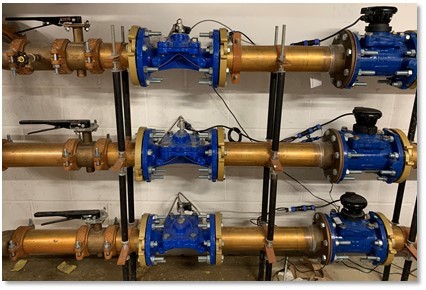
Tidhar needed a solution that would mitigate damage from water leaks and even eliminate the risk altogether. The ideal solution would detect leaks, alert staff, and automatically shut water off to prevent damage. It would need to function during all project phases and continue operation regardless of any communication or power infrastructure failures at the site. It had to be adaptable, robust and modular so it could grow with the site as construction progressed.
Solution: WINT is passionate about preventing the hazards and costs associated with water leaks, and about preventing water waste to reduce consumption and ongoing costs. Utilizing the power of artificial intelligence, signal processing, smart auto-shutoff valves and advanced IoT technologies, Water Intelligence units provide an all-in-one solution for organizations looking to eliminate water-leak damage and to reduce ongoing water waste. WINT’s customers include commercial facilities, construction projects and industrial facilities including the world’s leading construction and real-estate companies, facilities management organizations and prominent buildings.
WINT’s advanced solutions track water flows, learn usage patterns and behaviors and identify anomalies in real time. When an issue is detected WINT alerts staff and can automatically shut water off to prevent damage.
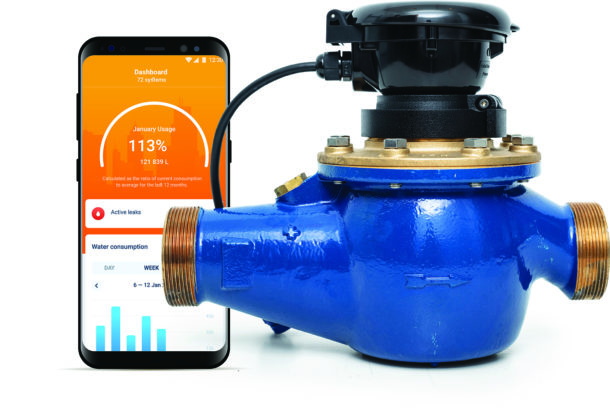
The WINT cloud, portal and mobile application provide maintenance staff with the tools required to manage water on the facility, track usage and control water flow and usage throughout the facility. WINT’s AI-based systems are installed at multiple locations at a site, with devices added to newly constructed areas and floors as the project advances. When the system detects a leak, it alerts staff and can instantly shut off water to the affected area.
Supervisors have the option to choose automated shutoff or an alert-only policy. Site supervisors and managers can remotely view related water-flow data from their mobile devices, and immediately shut-off or activate water flows in real time.
WINT systems can even communicate over the cellular network and be powered by battery, so they can be deployed even before Internet and electrical infrastructure has been installed.
Result: Over the past two years, Tidhar has deployed the WINT solution at over 40 construction projects. These include residential high-rise buildings as well as large, million-square-feet high-tech commercial facilities.
Over this period, Tidhar experienced six shutoff incidents with flow rates up to 500 gallons an hour across its portfolio. Disruptions could be attributed to a defective fitting, a broken hose and a running tap. In each case, WINT technology identified the issue, shut off the water supply and alerted staff, saving the sites from massive damage and delays.
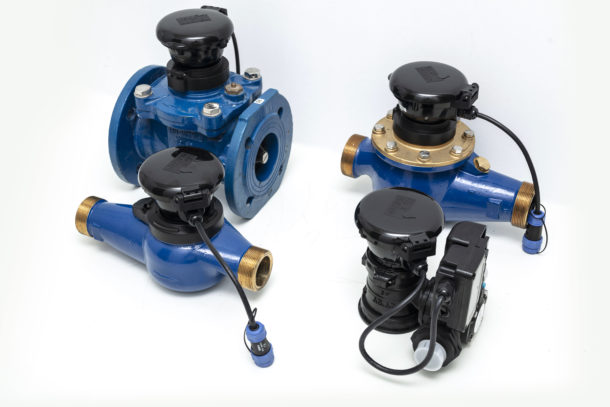
Since deploying WINT, Tidhar has not suffered a single water damage incident. In fact, the company has established WINT as a mandatory standard for all of its construction projects; any exclusion requires formal CEO approval.
“Water damage at construction sites is one of those things that keep construction executives up at night,” said Tidhar CEO Tal Hershkovitz. “The physical damage can be huge and the project delays a nightmare. WINT has made this one less thing to worry about. We sleep better knowing that WINT has an eye on water at our sites.”
Learn more at https://www.WINT.ai or email sales@wint.ai.
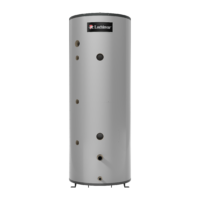
Lochinvar, an industry leader in high-efficiency boilers and water heaters, recently announced the introduction of the Reverse Indirect Water Heater to its continually expanding family of best-in-class water heating solutions. This unit is currently available in a 125-gallon capacity for a variety of applications, both residential and commercial. “For decades, Lochinvar has been dedicated to Read more
Lochinvar, an industry leader in high-efficiency boilers and water heaters, recently announced the introduction of the Reverse Indirect Water Heater to its continually expanding family of best-in-class water heating solutions. This unit is currently available in a 125-gallon capacity for a variety of applications, both residential and commercial.
“For decades, Lochinvar has been dedicated to not only cutting-edge product innovation, but also superior durability and flexibility, offering long-lasting, quality systems for a variety of applications,” said Jeff Vallett II, segment market manager for Lochinvar. “The top performance and dependability offered by the Reverse Indirect Water Heater is an excellent example of the Lochinvar experience our customers have come to expect, and should expect for years to come.”
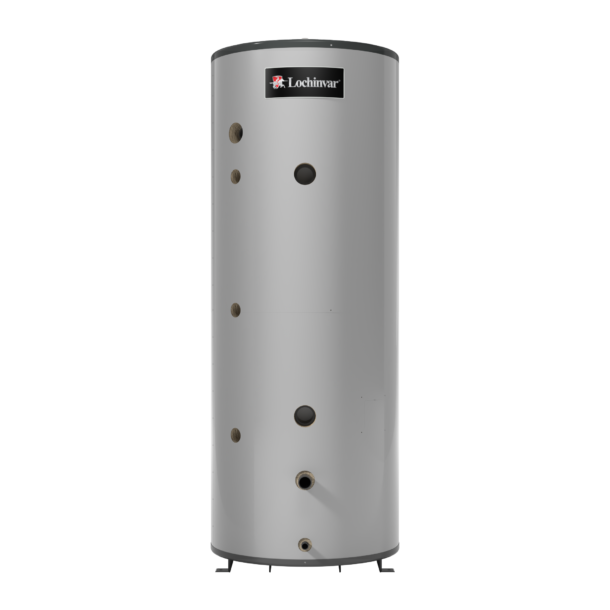
Providing up to 30 GPM of continuous hot water delivery, the Reverse Indirect Water Heater is designed perfectly for multi-family, commercial and large residential water heating applications using a hydronic system. The generous hot water supply allows for an extremely dependable hot water source. The Reverse Indirect Water Heater is available in ASME and Non-ASME construction, providing superior flexibility to fit most any job.
As with Lochinvar’s continued commitment to quality, the Reverse Indirect Water Heater comes standard with a 10-year limited warranty. It also features a 316L stainless-steel coil, a jacketed and insulated steel tank, and 2” HCFC foam insulation.
To learn more, visit www.Lochinvar.com.
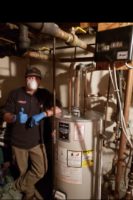
The right residential water heater solution depends on multiple factors Tankless water heaters are one of the most talked-about topics in the home services industry. The rising popularity of tankless water heater technology is being driven by the perception that tankless heaters provide the same dependable performance as traditional tank-type units while using less energy Read more
The right residential water heater solution depends on multiple factors
Tankless water heaters are one of the most talked-about topics in the home services industry. The rising popularity of tankless water heater technology is being driven by the perception that tankless heaters provide the same dependable performance as traditional tank-type units while using less energy and taking up less space.
That is true for certain single-family residential applications. The efficiency and reliability of tankless technology is sufficient to meet many household needs. As long as homeowners do their homework, have a clear understanding of their hot water usage, and work with a professional to select and install the right equipment, there are usually very few issues.
In many circumstances, however, traditional tank-type water heaters still offer maximum performance, reliability and value, and remain a solid option to meet the hot water needs of most families. Both tankless and tank-type applications can be an appropriate solution, depending on a number of factors, including the size of a home, its existing water heater configuration, the demand for hot water, budget, fuel type availability and personal preference.
For a typical residential application — a single-family home with two bathrooms, standard shower heads, a dishwasher and washing machine — one tankless unit will usually be sufficient. But homeowners can run into issues with high-flow, high-demand luxury fixtures, like a car wash shower head or a 90-gallon soaking tub. People may find that their new tankless product works fine 99% of the time, but they can’t get sufficient water pressure out of their high-flow shower head. This is because the flow rate of the fixture exceeds the amount that the unit can produce. Additionally, remodeling or adding to a home with an existing tankless water heater might create more demand than the installed unit can supply.
In those situations, a tankless water heater paired with a storage tank might be the only available option. But this approach is rarely a preferred solution, because most homeowners choose tankless in the first place because they wanted its efficiency or space-saving features.
Tank-type water heaters maintain a constant reservoir of hot water. Tankless heaters only work when a fixture opens, using less energy overall. But tankless requires more energy when it is used, making the transition from tank to tankless a challenge in many circumstances.
Most gas tankless water heaters provide between 120,000 and 199,000 BTUs, compared to about 40,000 BTUs for tank-type residential gas heaters. In order to switch from a gas tank-type heater to tankless gas, the capacity of the gas line may need to be increased, adding complexity and cost to installation. Similarly, an electric tankless water heater can use double or triple the power of an electric storage tank heater, requiring major electrical upgrades.
Venting is another potential roadblock in transitioning from tank to tankless. Adding or expanding the capacity of existing exhaust and intake pipes may be required, which could mean cutting additional holes in the walls and roof.
Maintenance is critical for the longevity and performance of tankless water heaters. Unfortunately, water heaters tend to be the forgotten appliance. They’re hidden behind a utility door or inside a closet, and many people don’t think about them until there’s an issue and they don’t have hot water.
We know many people don’t keep up with the recommended maintenance of their water heaters, but tank-type units can last for 10 years or more with few problems. Tankless water heaters, however, are more likely to show reduced performance and suffer breakdowns if users don’t follow a regular maintenance schedule.
As the popularity of tankless water heaters continues, new features are becoming available, such as recirculation, connectivity and built-in buffer tanks. The Bradford White Infiniti® K Series tankless gas water heaters offer top connections, which make switching from a storage tank heater more convenient. At the same time, innovations like electric heat pump water heaters and condensing gas water heaters are opening new possibilities for energy efficiency in tank-type water heaters.
In the end, the distinction between tankless and tank-type water heaters isn’t as neat as it is often presented. Both technologies offer advantages, and tank-type water heaters will continue to be a solution in many circumstances for years to come. It’s about choosing the right product for the job at hand. As long as consumers know what they’re looking for and work with a professional, they can be confident that they’ll find the right configuration for their home.
 GUEST AUTHOR: Trevor Pinto is the Product Manager of Residential Products and Application Support for Bradford White Corporation and has been with the company since 2012. Pinto began his career in the Product Management Department starting out as a Product Analyst and has grown in the ranks over the past several years. In his current role, he oversees the residential product line as well as the application support team. The application support team is responsible for assisting Bradford White’s customer base with selecting the appropriate product for a specific application and providing general product knowledge.
GUEST AUTHOR: Trevor Pinto is the Product Manager of Residential Products and Application Support for Bradford White Corporation and has been with the company since 2012. Pinto began his career in the Product Management Department starting out as a Product Analyst and has grown in the ranks over the past several years. In his current role, he oversees the residential product line as well as the application support team. The application support team is responsible for assisting Bradford White’s customer base with selecting the appropriate product for a specific application and providing general product knowledge.
Prior to joining Bradford White, Trevor graduated from Indiana University of Pennsylvania with a bachelor’s degree in Criminology. He grew up in the Philadelphia suburbs and is a passionate Philadelphia sports fan, enjoys music and the outdoors including camping, hiking, and fishing. He currently resides in Lansdale, PA with his wife and two children.
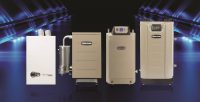
Residential and commercial heating contractors can hone their boiler technology skills and training this spring by participating in Weil-McLain’s Knowledge Builder Sessions taking place twice a week in March, April and May. The weekly educational sessions, hosted by the technical training team from the leading North American designer and manufacturer of hydronic comfort heating systems, will cover Read more
Residential and commercial heating contractors can hone their boiler technology skills and training this spring by participating in Weil-McLain’s Knowledge Builder Sessions taking place twice a week in March, April and May.
The weekly educational sessions, hosted by the technical training team from the leading North American designer and manufacturer of hydronic comfort heating systems, will cover high- efficiency residential boilers on Wednesdays starting March 3 and high-efficiency commercial boilers on Thursdays beginning March 4.
Each course, running through late May, will cover a specific Weil-McLain boiler as well as installation and servicing applications. The complete course offering is available at www.weil-mclain.com/training.
“Our livestream training program will cover the gamut, from technology, features and benefits, to maintenance, troubleshooting, installation, controls and set-up,” said Dante DeVille, Technical Training Manager with Weil-McLain. “Contractors, engineers and facility managers alike can select a specific course for in-depth product training and gain insider tips for keeping Weil-McLain boilers running at peak operational efficiency.”
The residential training programs will cover applications, installation and servicing of Weil-McLain’s popular condensing and non-condensing boilers, including its new ECO® Tec high-efficiency premium residential boiler, the Evergreen® stainless steel condensing boiler, the Ultra™ corrosion-resistant boiler, GV90+® high-efficiency cast iron boiler and the AquaBalance™ combi or heat-only boiler.
Commercial boiler training sessions will feature the Stainless Vertical Firetube™ (SVF) commercial condensing boiler line with industry-leading thermal efficiencies up to 96.8%, the SlimFit® boiler designed for limited spaces, Evergreen® Pro and the full line of Weil-McLain cast iron boilers.
Commercial application courses include maintenance and troubleshooting, steam boiler replacement, commercial condensing boiler piping, hybrid applications, specifying high efficiency equipment and commercial condensing boiler controls.
For more information or to register for a session, visit www.Weil-McLain.com/Training.
